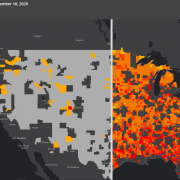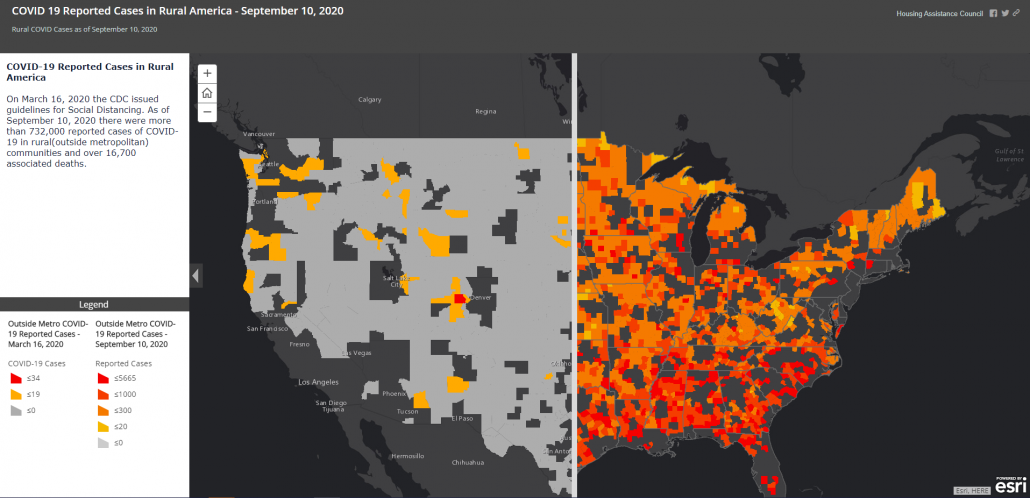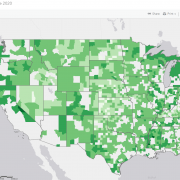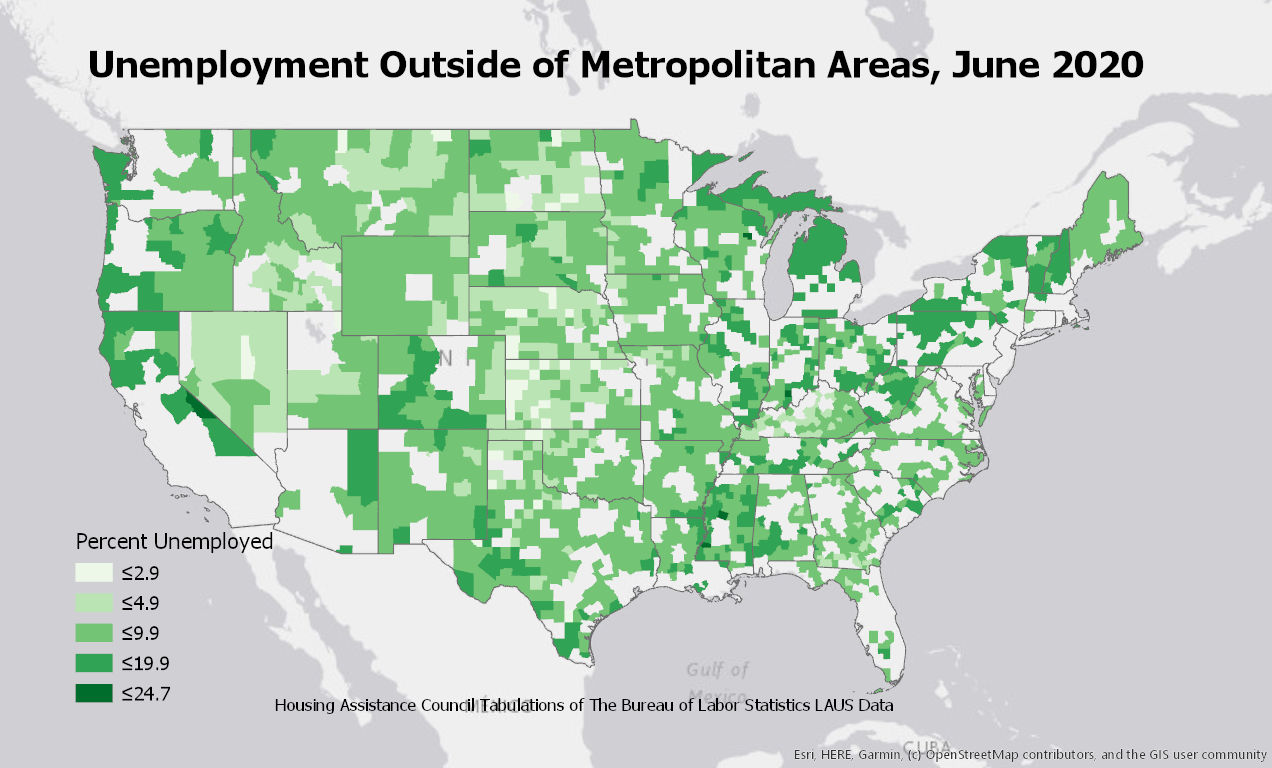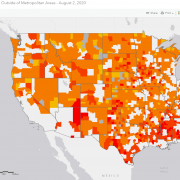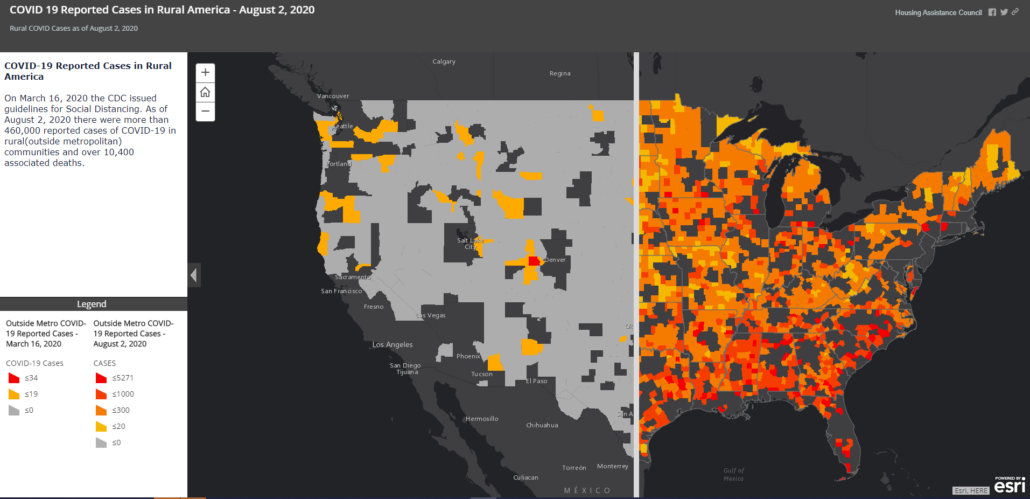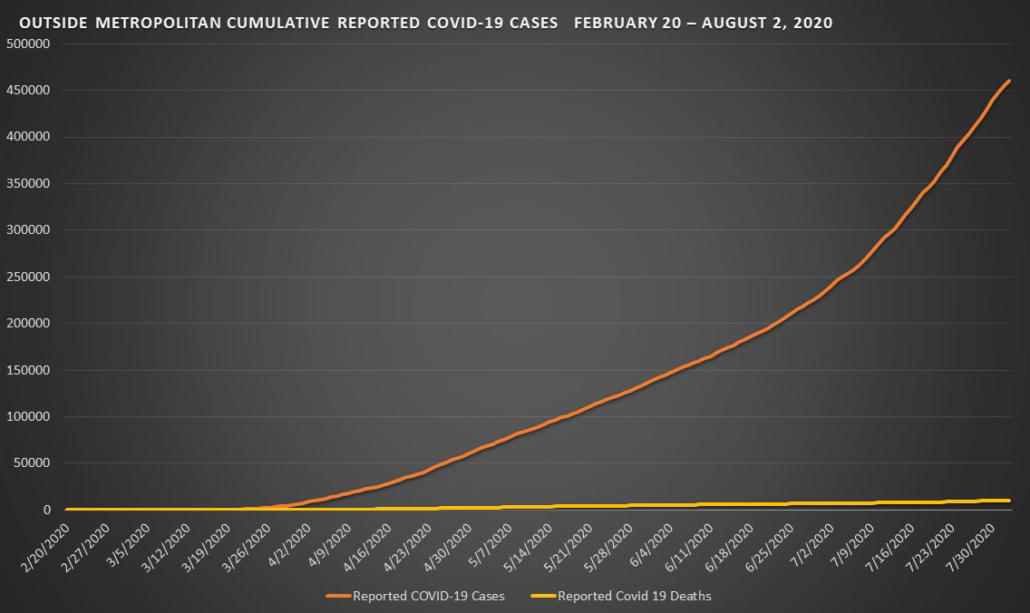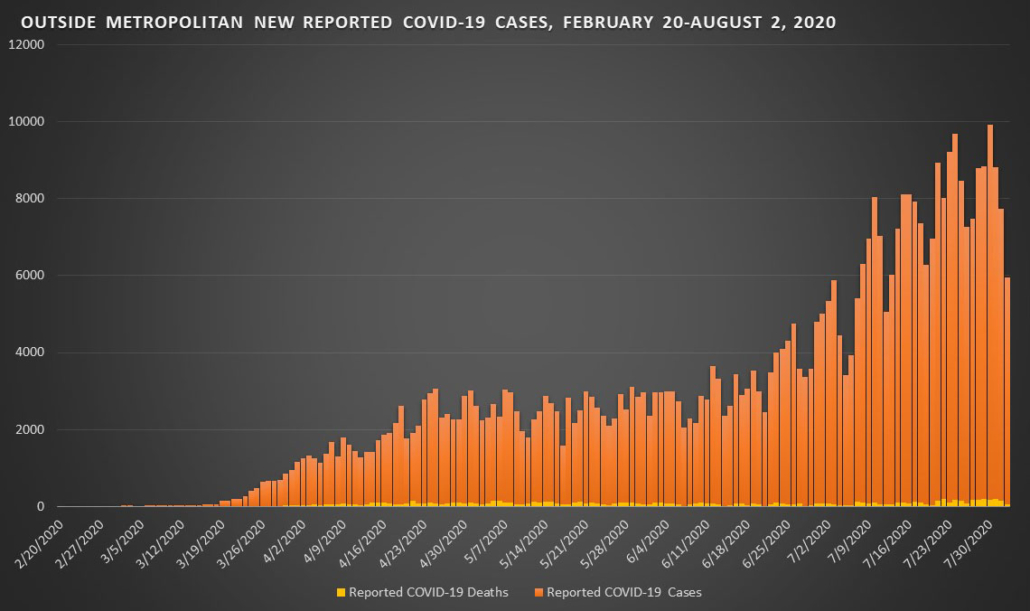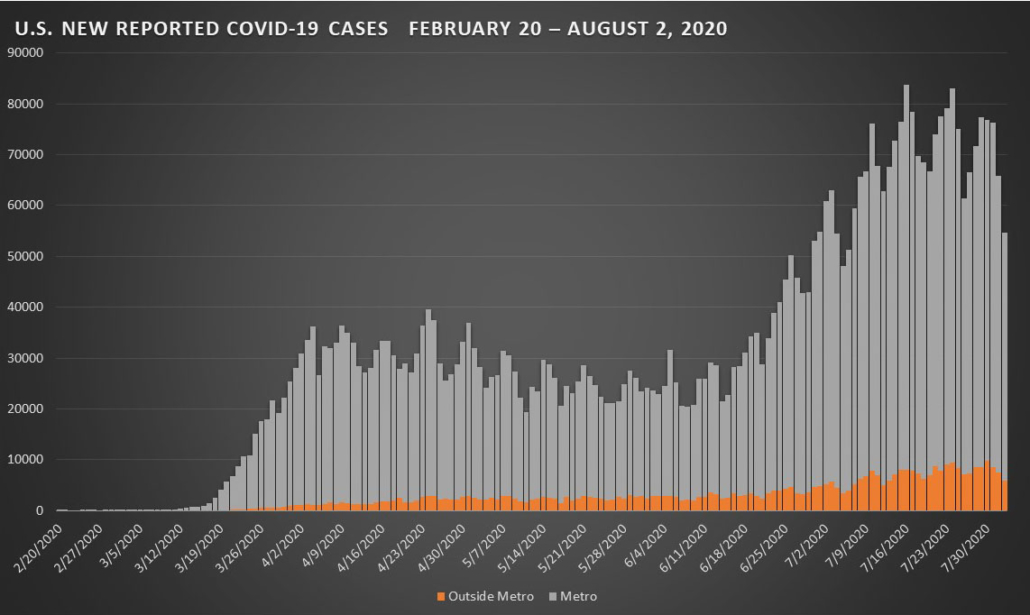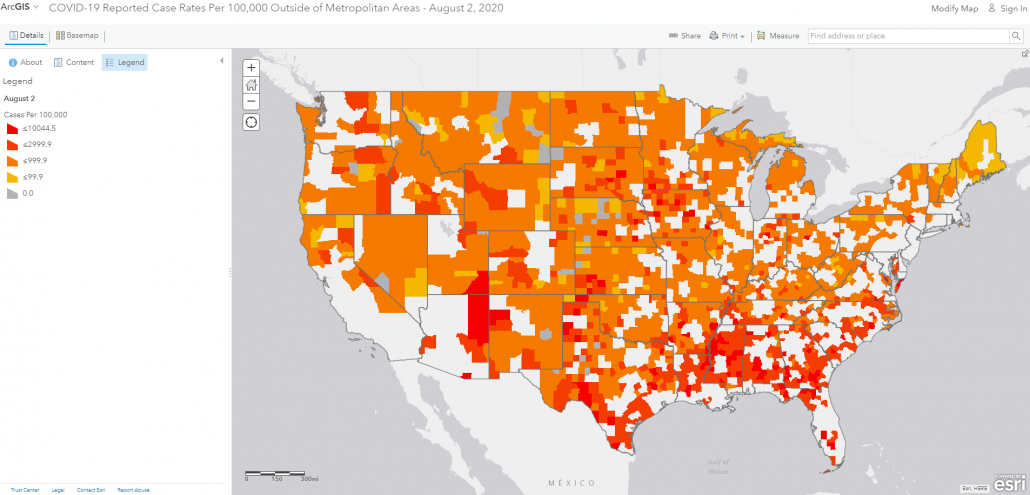2020 West Coast Wildfires Disaster Guide
For the past three weeks, orange skies have covered much of the West Coast due to wildfire smoke. Dry conditions, lightning, and human activity have sparked these wildfires in California, Washington, and Oregon and thousands have evacuated. Over 28,000 firefighters, including prison inmates, are actively working to contain the 42 major wildfires across the region.1
In August, a storm of lightning strikes north of Sacramento sparked a cluster of wildfires that has damaged more than 471,000 acres (largest wildfire on record) and is only 24 percent contained.2 So far, wildfires have burned over 3.1 millions acres in California in 2020.3 Half a million acres have burned in Oregon and Washington Governor Jay Inslee relayed from the fire chief that he hadn’t seen a fire explode like this one “in his 33 years of service. Climate change is making these fires more frequent, more expensive and far more dangerous.”4
Even after the fires and smoke subside, there will be long-term consequences, including effects of smoke inhalation and contaminated ground water and reservoirs. These deleterious health effects compound the problems already caused by the pandemic.5
To see current fire information and updates, check the California Fire incident information
online at https://www.fire.ca.gov/incidents.
Resources
The following guide provides information for individuals and families affected by the fires about current and potential efforts. For more information, please see HAC’s report: Picking up the Pieces: Restoring Rural Housing and Communities After a Disaster, available free online at https://Ruralhome.org/disaster-guide/.
Federal Emergency Management Agency (FEMA)
If federal assistance becomes available for residents affected by the fires, to apply you must complete a multi-purpose application online at https://www.disasterassistance.gov or over the phone on FEMA’s toll-free helpline.
Toll-free helpline:
1-800-621-FEMA (3362)
For hearing impaired callers only:
1-800-462-7585 (TTY)
1-800-621-3362 (Video Relay Service)
U.S. Department of Housing and Urban Development (HUD)
HUD offers a Disaster Recovery Toolkit and makes other related resources available:
https://www.hud.gov/info/disasterresources.
U.S. Department of Agriculture (USDA)
To determine whether USDA has specific assistance available for fire survivors who had USDA Rural Development assistance before the fires, check for information online at https://www.rd.usda.gov/page/rural-development-disaster-assistance, or call the USDA Rural Development state office in California at 530-792-5830 for rental housing or 530-792-5816 for owner-occupied housing.
American Red Cross Disaster Service
For referrals and updates on Red Cross shelter services in your area, locate a local Red Cross office through: https://www.redcross.org/get-help.html or by calling the Public Inquiry Center at 1-800-214-0441.
State Resources
California
https://www.fire.ca.gov/incidents
https://response.ca.gov/
Washington
https://www.dnr.wa.gov/Wildfires
https://www.governor.wa.gov/news-media/washington-wildfire-resources
https://gacc.nifc.gov/nwcc/
Oregon
https://connectingpointonline.com/solutions/wildfire-resources/
https://gacc.nifc.gov/nwcc/
State Housing Agencies
Each state has at least one agency that administers state and federal programs to promote decent
affordable housing for low-income individuals. Typically, these agencies and authorities administer
some aspects of state or federal programs.
California Housing Finance Agency
500 Capitol Mall, Suite 1400
Sacramento, CA 95814-4737
Phone: (916) 326-8000
877-9-CalHFA (877-922-5432)
https://www.calhfa.ca.gov/
Oregon Housing and Community Services
725 Summer Street NE, Suite B
Salem, OR 97301-1266
Phone: (503) 986-2000
https://www.ohcs.oregon.gov
Washington State Housing Finance Commission
1000 2nd Avenue, Suite 2700
Seattle, WA 98104-1002
Phone: (206) 464-7139
https://www.wshfc.org
Local Housing Authorities
Use the links below to search for your local housing authority.
California
https://www.hud.gov/states/california/renting/hawebsites
https://www.hud.gov/sites/dfiles/PIH/documents/PHA_Contact_Report_CA.pdf
Oregon
https://www.housingauthoritiesoforegon.com/
https://www.hud.gov/sites/dfiles/PIH/documents/PHA_Contact_Report_OR.pdf
Washington
https://www.awha.org/
https://www.hud.gov/sites/dfiles/PIH/documents/PHA_Contact_Report_WA.pdf
Evacuating and Returning Home
The Red Cross website provides suggestions on actions to prepare for evacuation and returning home after a fire:6
IF A FIRE OCCURS Listen to your local media for updates on the fire and be ready to leave quickly. Back your car into the garage or park it in an open space facing your direction of escape. You should also:
- Keep your pets in one room so you can find them quickly if you have to evacuate.
- Arrange for a temporary place to stay outside the threatened area.
- Keep your indoor air clean – close windows and doors to prevent the smoke outside from getting in your home.
- Use the recycle mode on the air conditioner in your home or car. If you don’t have air conditioning and it’s too hot to be inside, seek shelter somewhere else.
- If smoke levels are high, don’t use anything that burns and adds to air pollution inside such as candles, fireplaces and gas stoves
AFTER THE FIRE Don’t go home until fire officials say it is safe. Be cautious entering a burned area – hazards could still exist. Avoid damaged or downed power lines, poles and
wires. Other things to do include:
- Keep your animals under your direct control. Hidden embers and hot spots could burn them.
- Wet down debris to minimize breathing dust particles.
- Wear leather gloves and shoes with heavy soles.
- Throw out any food that has been exposed to heat, smoke or soot.
- Recheck for smoke or sparks throughout your home for several hours after the fire, including in your attic. Wildfire winds can blow burning embers anywhere so check for embers that could cause a fire.
If your home has experienced damage, remember to the check the outside of your home before you enter. Look for loose power lines, broken or damaged gas lines, foundations cracks, missing support beams, or other damage. It may be safest to ask a building inspector of contractor to check the structure before you enter. Do not force jammed doors open, as they may be providing needed support to the rest of the home. Sniff for gas to ensure there are no natural or propane gas leaks. If you do have a propane tank system, make sure to turn off all valves and contact a propane supplier to check the system before you use it again. Check floors and ceilings to ensure they are not sagging from water damage, this can be especially hazardous. Take photographs of any damage as you may need them for insurance claims or FEMA claims later on.7
1“’We have never seen this’: 10% of Oregon forced to evacuate; death toll rises from wildfires across Western states”, September 11, 2020, https://www.usatoday.com/story/news/nation/2020/09/11/wildfire-updates-oregon-evacuations-california-deaths/3467271001/
2“California Daily Wildfire Update,” September 11, 2020, https://www.fire.ca.gov/daily-wildfire-report/
3“Wildfire is largest in California history and continues to grow,” September 11, 2020, https://thehill.com/changing-america/resilience/natural-disasters/515997-wildfire-is-largest-in-california-history-and
4 “Deadly wildfires rage in California, Oregon and Washington,” September 11, 2020, https://www.cnn.com/us/live-news/west-coast-wildfires-09-10-2020/index.html
5 “A Climate Reckoning in Fire-Stricken California,” September 11, 2020, https://www.nytimes.com/2020/09/10/us/climate-change-california-wildfires.html
6“Red Cross Shelters 1,000s as California Fires Burn out of Control,” October 20, 2017, https://www.redcross.org/news/article/Red-Cross-Helps-as-Fires-Burn-Out-of-Control-in-California.
7Excerpted from the Red Cross’s Guide on “Checking Your Home: Structural Elements” available at https://www.redcross.org/find-help/disaster-recovery/home-structural-elements.

